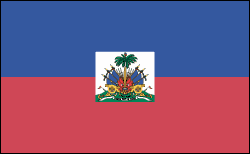Haiti History


Unrest Stifles Development
The revolution wrecked Haiti's economy. Years of strife between the light-skinned mulattos who dominated the economy and the majority black population, plus disputes with neighboring Santo Domingo, continued to hurt the nation's development. After a succession of dictatorships, a bankrupt Haiti accepted a U.S. customs receivership from 1905 to 1941. Occupation by U.S. Marines from 1915 to 1934 brought stability. Haiti's high population growth made it the most densely populated nation in the Western Hemisphere.
In 1949, after four years of democratic rule by President Dumarsais Estimé, dictatorship returned under Gen. Paul Magloire, who was succeeded by François Duvalier, nicknamed “Papa Doc,” in 1957. Duvalier's secret police, the “Tontons Macoutes,” ensured political stability with brutal efficiency. Upon Duvalier's death in 1971, his son, Jean-Claude, or “Baby Doc,” succeeded as ruler of the poorest nation in the hemisphere. In the early 1980s, Haiti became one of the first countries to face an AIDS epidemic. Fear of the disease caused tourists to stay away, and the tourist industry collapsed, causing rising unemployment. Unrest generated by the economic crisis forced Baby Doc to flee the country in 1986.







